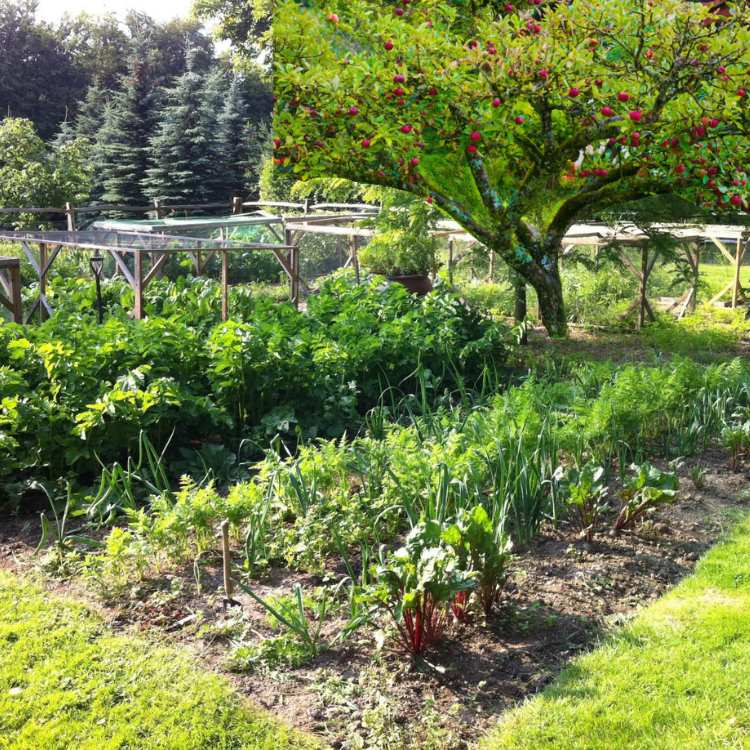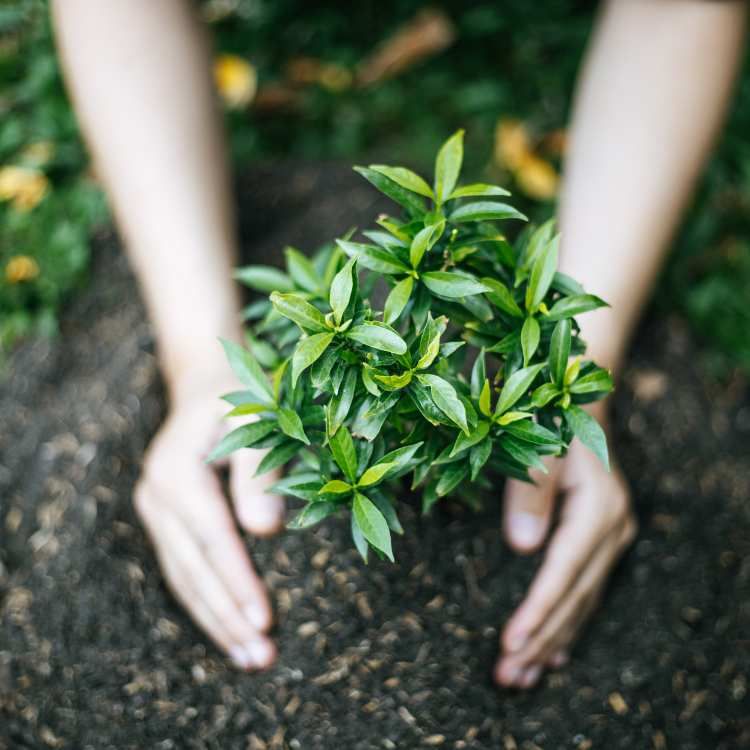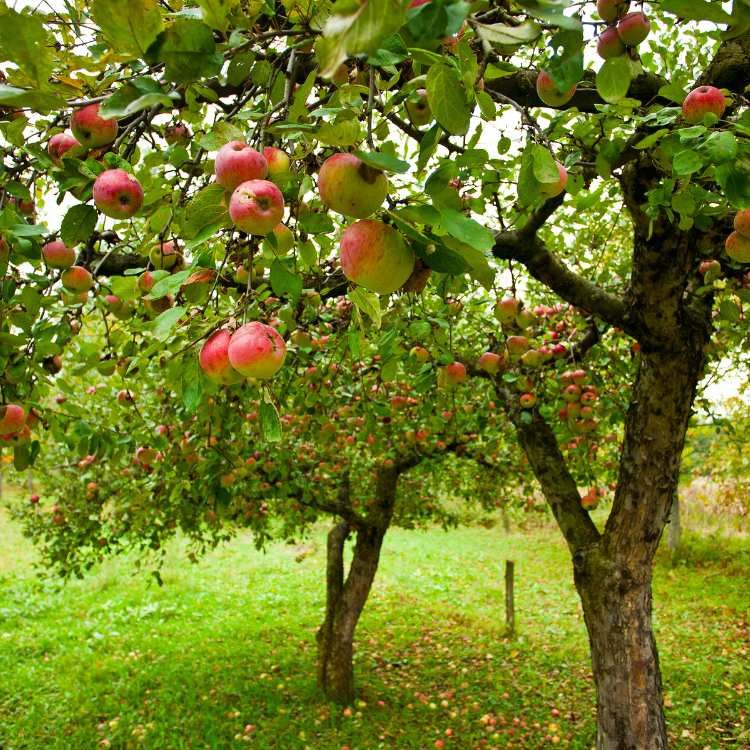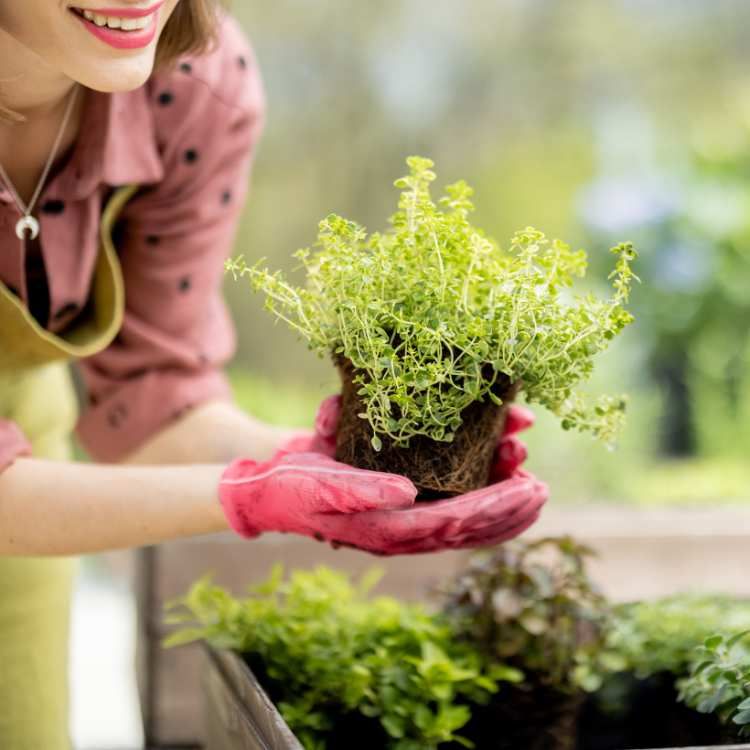
Key Takeaways
Survival gardens offer food security and self-sufficiency through home-grown fruits and herbs.
Proper soil preparation and site selection are critical for a thriving garden.
Choosing fruit varieties and herbs that suit your climate ensures success.
Effective planting techniques can increase the survival rate of fruit trees.
Understanding the basics of herb cultivation can yield a bountiful harvest.
Why Grow Fruit and Herbs in Your Survival Garden?

Imagine having a backyard that doesn’t just look good, but also feeds you! That’s the power of a survival garden. It’s not just about surviving, it’s about thriving. With the right fruit trees and herbs, you can create a garden that provides you with a variety of flavors and essential nutrients, all while cutting down on your grocery bills. Most importantly, you’ll know exactly where your food comes from, and that it’s grown without harmful chemicals.
Gardens are more than just a source of food; they are a source of empowerment. By growing your own, you take control of your food supply, which is essential in times of uncertainty. Besides that, tending to your garden is a therapeutic activity that can bring peace and joy to your daily life.
Top Fruit Trees and Herbs for Resilience and Nutrition
When selecting plants for your survival garden, you want to focus on those that will provide high nutritional value and can be easily preserved. Here are some top picks:
Apple Trees: High in fiber and vitamins, apples can be stored for months.
Lemon Trees: Rich in vitamin C, lemons are great for immune support.
Basil: This herb is not only delicious but also has antibacterial properties.
Mint: Easy to grow, mint is perfect for digestion and making herbal teas.
For example, apple trees can be a fantastic addition to your survival garden. Not only do they provide fruit that can be eaten fresh, but they can also be turned into cider, sauce, or dried for long-term storage. Plus, they can offer shade and attract pollinators to your garden.
Soil and Site Preparation
Before you even think about planting, you need to make sure your soil is ready. This means testing it to see what nutrients it has and what it’s lacking. You can pick up a soil test kit at your local garden center or get a professional to do it for you. Once you know what you’re working with, you can amend your soil to create the perfect environment for your plants to flourish.
Choosing the Right Location
The location of your garden is as crucial as the plants you choose to grow. You need a spot that gets plenty of sunlight, as most fruit trees and herbs love the sun. But you also need to consider water drainage – you don’t want your plants to get waterlogged. A gentle slope is ideal, as it allows water to drain naturally.
Think about accessibility too. You want your garden close enough to your home for easy harvesting, but far enough away from any trees that might cast too much shade or compete for water and nutrients.
Testing and Amending Your Soil
Good soil is the foundation of a good garden. It’s where your plants will get most of their nutrients. If your soil test reveals that your soil is lacking in certain nutrients, you can add compost, manure, or specific fertilizers to fix the issue. Remember, healthy soil equals healthy plants.
Sunlight and Shade Considerations for Optimal Growth
Most fruit trees and herbs need a good amount of sunlight to produce a bountiful harvest – typically around six to eight hours of direct sunlight a day. However, in hotter climates, some afternoon shade can prevent plants from getting scorched. Observe your potential garden site throughout the day to see how the sun moves across it, and plan accordingly.
By paying attention to these details, you’re setting yourself up for success. Your garden will become a reliable source of food that can sustain you and your family, come what may. And remember, the journey to self-sufficiency is a rewarding one, filled with learning and growth – quite literally!
Now, let’s dive deeper into selecting the best varieties for your garden and the planting techniques that will ensure their survival and growth.
Selecting Fruit Trees and Herbs
Choosing the right fruit trees and herbs for your garden is a bit like picking your team for a soccer match. You want to select the players that will perform best in your local climate and soil conditions. This means doing a bit of research to find out which varieties are known to thrive in your area. Your local extension office or a nearby nursery can be invaluable resources for this information.
Deciding on the Best Fruit Varieties for Your Climate
Every climate has its champions. For colder regions, consider hardy fruit trees like apples or pears that can withstand frost. If you’re in a warmer area, citrus trees and peaches might be your best bet. But don’t stop at just the type of tree—look into different varieties, as some may be more drought-resistant or disease-resistant than others.
Herbs That Thrive in Diverse Conditions
Herbs are the secret superheroes of any garden. Many are drought-tolerant and can grow in less than ideal conditions. Start with the basics like rosemary, thyme, and oregano. These not only add flavor to your dishes but also bring fragrance to your garden and can have medicinal properties.
Perennial vs. Annual Herbs: What’s Best for Your Garden?
Perennials like sage and mint come back year after year, offering a “plant once, harvest for years” scenario. Annuals, on the other hand, like basil and cilantro, need to be replanted each season. A mix of both can provide a diverse and sustainable herb garden.
Planting Techniques for Fruit Trees

When it comes to planting fruit trees, there’s a bit more to it than just digging a hole and dropping in a tree. Proper planting can be the difference between a tree that thrives and one that just survives—or doesn’t make it at all.
Digging the Perfect Hole: Depth and Width for Tree Planting
The hole for your fruit tree should be just as deep as the root ball and twice as wide. This gives the roots room to spread out and access nutrients and water. But be careful not to plant too deep—this can suffocate the tree.
The Root of Success: Root Care Before Planting
Before you plant, give your tree’s roots some love. If they’re bound in a tight circle, gently tease them apart. If they’re in a burlap sack or pot, remove it so the roots are free to grow into the surrounding soil.
Mulching and Watering Practices Post-Planting
After planting, mulch can be a tree’s best friend. It conserves moisture, keeps the soil temperature stable, and adds nutrients as it breaks down. Water your new tree deeply to settle the soil and eliminate air pockets, then keep it well-watered throughout its first growing season.
Herb Garden Cultivation

Herbs are less demanding than fruit trees but still need a little finesse to get the best out of them. Whether you’re growing in pots, raised beds, or directly in the ground, your herb garden will become a treasure trove of flavors for your kitchen. For those interested in a broader scope of urban agriculture, consider exploring ways to cultivate your survival garden for a fulfilling home schedule.
Layout Designs for Herb Gardens
Design your herb garden for ease of access and harvesting. Group herbs with similar water and sunlight needs together. Consider raised beds or container gardens if you have limited space or poor soil. And remember, herbs like mint can be invasive, so it’s often best to keep them in pots.
Propagating Herbs: Seeds vs. Cuttings
Starting herbs from seeds is cost-effective and offers a wider variety of choices. However, some herbs, like rosemary and lavender, are easier to start from cuttings. This can also be a quicker way to a full, lush herb garden. For those interested in maximizing their garden’s potential, understanding the role of mycorrhizal fungi in thriving gardens is essential.
Watering and Weeding: Herb Garden Maintenance
Consistent watering is key to a vibrant herb garden, especially during dry spells. But be careful not to overwater, as herbs don’t like soggy feet. Keep your garden weed-free to reduce competition for nutrients and water, and to keep pests at bay.
Pest and Disease Management for Fruit and Herbs
Even the most well-maintained garden can encounter pests and diseases. The trick is to manage them without resorting to harsh chemicals that can harm the environment and your health.
Organic Methods to Keep Pests at Bay
Encourage beneficial insects like ladybugs and lacewings that prey on common garden pests. Plant flowers like marigolds and nasturtiums to attract them. You can also use organic sprays and traps to deal with pests without damaging your plants or the ecosystem.
Spotting and Treating Common Diseases
Keep an eye out for signs of disease like spots on leaves or stunted growth. Remove and destroy affected plant parts to prevent the spread. Ensure good air circulation around your plants and avoid overhead watering to keep foliage dry and less prone to fungal infections.
Companion Planting as a Natural Deterrent
Companion planting is about creating plant friendships in your garden. Some plants, like garlic, can repel pests naturally and protect their neighbors. Research which plants work well together for a harmonious and healthy garden.
Harvesting and Preserving Your Bounty
When your fruit trees are laden with ripe fruit and your herb plants are lush and full, it’s time to harvest. Picking your produce at the right time is crucial for the best flavor and nutritional value. Fruits like apples and pears can be picked when they’re firm but slightly soft to the touch. Herbs should be harvested in the morning after the dew has evaporated but before the sun is at its peak.
Once harvested, preserving your bounty ensures you can enjoy the fruits of your labor throughout the year. Apples can be stored in a cool, dark place for months. Herbs can be dried or frozen for use in cooking all year round. Here’s a quick guide to preserving your harvest:
Drying: Tie herbs in small bunches and hang them upside down in a warm, airy place.
Freezing: Freeze herbs in oil or water in ice cube trays for easy addition to recipes.
Canning: Make jams, jellies, or preserves from fruit to enjoy sweet treats any time.
By preserving your harvest, you extend the benefits of your survival garden and ensure a steady supply of home-grown goodness.
Expanding Your Garden’s Reach
As your gardening skills grow, so can your garden. Scaling up doesn’t have to mean just making your garden bigger; it’s about making it smarter. Succession planting, vertical gardening, and intercropping are all ways to get more out of the space you have.
Strategies for Scaling Up Your Garden Space Efficiently
Maximize your garden’s potential without overextending yourself. Use vertical space by training vines up trellises. Employ succession planting by sowing new seeds as soon as one crop is harvested. Intercrop by planting fast-growing crops between slower ones to make the most of your space.
Season Extension Techniques for Year-Round Production
Don’t let the end of summer be the end of your garden. With season extension techniques like cold frames, hoop houses, and mulching, you can protect your plants from the cold and keep your garden productive well into the cooler months.
Seed Saving for Future Planting
Seed saving is the ultimate self-sufficiency move. By selecting seeds from the healthiest plants, you’re breeding a garden that’s perfectly adapted to your unique conditions. Just let some of your herbs and fruits go to seed, then collect, dry, and store them for next year.
Now that you have the knowledge and tools at your fingertips, you’re ready to take the next step toward self-sufficiency.
Ready to Grow Your Own Survival Garden?
Starting a survival garden is an empowering step towards self-reliance. It’s about more than just planting seeds; it’s about cultivating a sustainable future for you and your loved ones. Whether you’re a seasoned green thumb or a gardening newbie, there’s no better time to start than now.
With careful planning, a bit of hard work, and a whole lot of love, your survival garden will flourish. Remember, the journey is as rewarding as the destination.
Launch Your Garden Journey with Quality Seeds
To ensure your garden’s success, start with high-quality seeds. Choose non-GMO, heirloom varieties that will give you the best taste and nutrition. For guidance on what to plant, consider the expert advice on survival/victory gardens. And when it comes to finding these seeds, look no further than Survival Essentials. Their selection of seeds is tailored to help you create a garden that’s as resilient as it is bountiful.
For example, Survival Essentials offers an extensive variety of heirloom seeds, perfect for starting your survival garden. From robust vegetables to fragrant herbs, they provide the essentials for a diverse and nutritious garden.
Embrace the satisfaction of self-sufficiency. With every seed you sow, you’re one step closer to a sustainable lifestyle. So, what are you waiting for? Get Started on your survival garden today!
Embrace the Satisfaction of Self-Sufficiency
There’s a unique joy that comes from knowing you can sustain yourself. It’s the pride of biting into a crisp apple from your own tree or seasoning a meal with herbs you grew yourself. This connection to the earth and your food is what makes survival gardening so fulfilling.
So take the leap and start your journey to self-sufficiency. Your future self will thank you for the foresight and the bounty that your survival garden will provide.
Frequently Asked Questions (FAQ)
Got questions? You’re not alone. Here are some answers to common queries about survival gardening:
What Are the Most Nutrient-Dense Fruits to Grow?
When it comes to nutrient density, berries like blueberries and strawberries are top of the list. They’re packed with antioxidants, vitamins, and minerals. Apples and pears are also great choices, providing fiber and a range of vitamins.
How Do You Protect Herb Gardens from Harsh Weather?
Herbs are generally hardy, but extreme weather can take its toll. Use mulch to protect against heat and cold, and consider moving potted herbs indoors or under cover during severe weather. For perennial herbs, proper winterizing is key to their survival.
Can You Grow Fruit Trees in Containers?
Yes, you can grow fruit trees in containers, especially dwarf varieties. Just make sure they have enough room for their roots to grow and receive adequate water and nutrients. Container gardening is a great option for those with limited space.
What Are the Best Herbs for Medicinal Use?
Many herbs have medicinal properties. Echinacea is known for immune support, peppermint can aid digestion, and chamomile is often used for its calming effects. Always consult with a healthcare provider before using herbs medicinally.
Echinacea: Boosts the immune system.
Peppermint: Relieves digestive issues.
Chamomile: Calms the nervous system.
How Often Should You Water Fruit Trees and Herb Gardens?
Watering frequency depends on the weather and soil type. Fruit trees typically need more water as they establish, then can be watered deeply less frequently. Herbs generally prefer drier conditions and should be watered when the soil feels dry to the touch.







Leave a Reply